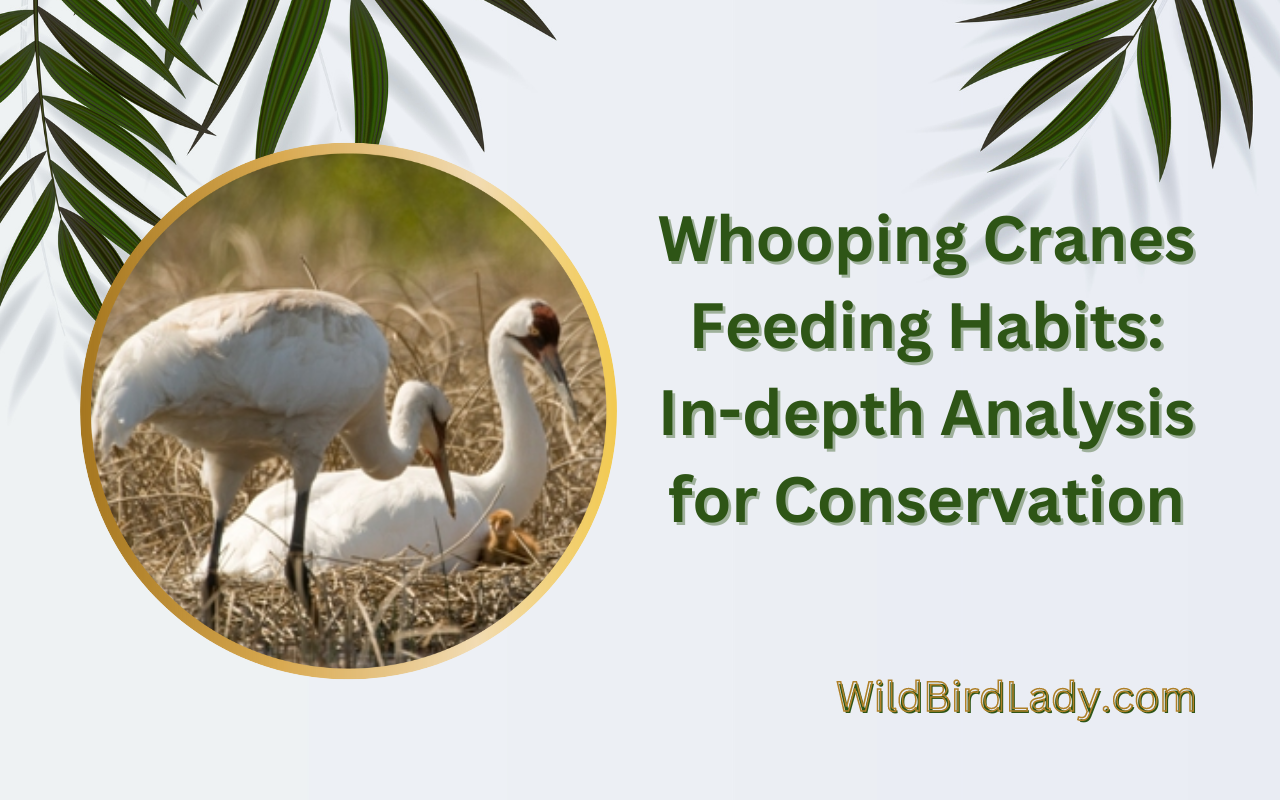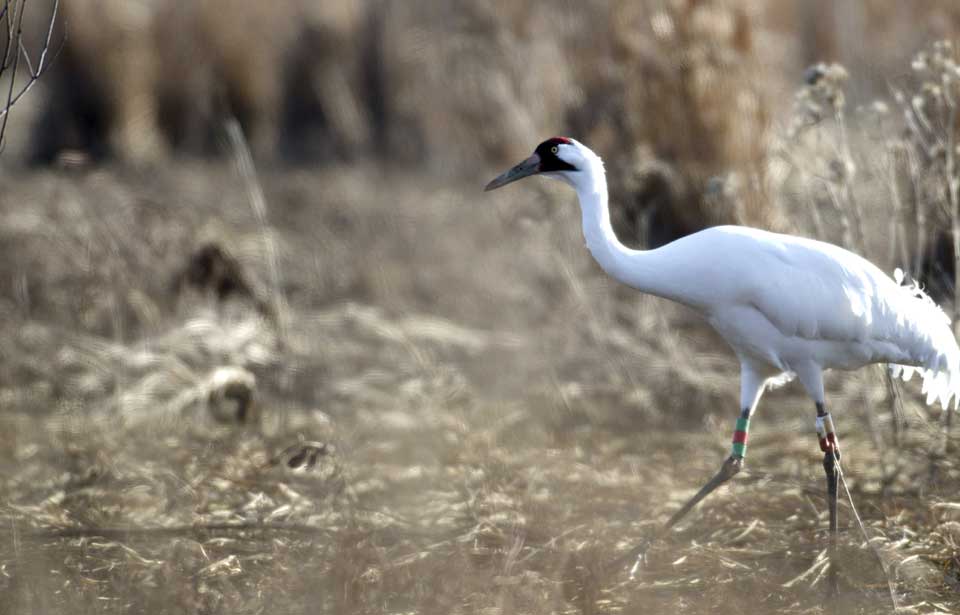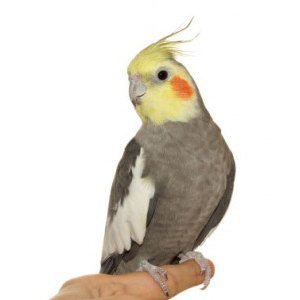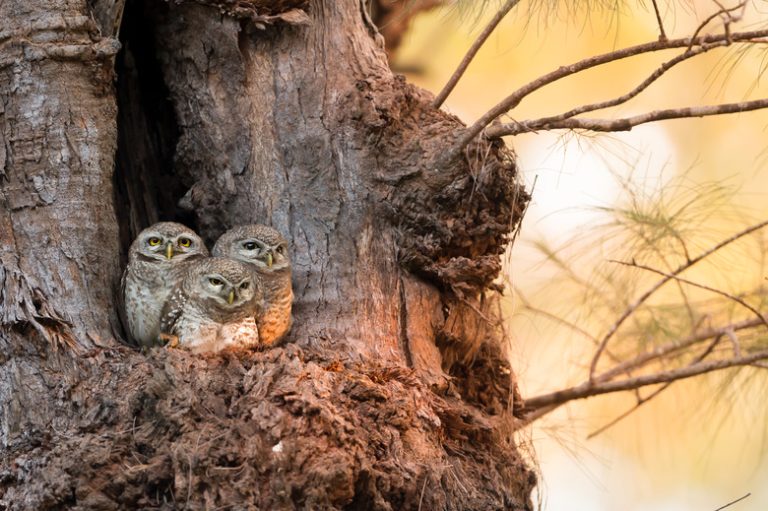Whooping Cranes Feeding Habits: In-depth Analysis for Conservation
🐦 Whooping cranes are carnivorous birds primarily feeding on small animals and aquatic plants. In their natural habitat, they feed on fish, crustaceans and insects.
Whooping cranes are one of the rarest birds in North America, with only around 800 individuals left in the wild. Their feeding habits and diet significantly affect their survival and reproduction. These majestic birds are primarily carnivorous, and their diet varies depending on their geographical location and food availability.
They mainly feed on small aquatic animals like fish, crustaceans and insects. However, they switch to a more herbivorous diet during the breeding season, feeding on roots, leaves, and berries. Apart from their natural prey, whooping cranes can also be observed feeding on agricultural crops, such as corn and soybeans, which may cause conflicts with farmers. This article will provide a detailed analysis of whooping cranes’ feeding habits and diet, shedding light on their nutritional requirements and their challenges in obtaining food in their changing habitats.
Whooping Cranes: An Introduction
Feeding Habits Of Whooping Cranes: A Detailed Analysis
Whooping cranes are an iconic species of North America, known for their tall stature, graceful movements, and distinctive calls. These majestic birds are one of the rarest species of cranes in the world, with only around 800 individuals remaining in the wild.
In this blog post, we will look closer at the feeding habits of whooping cranes, exploring their diet, behavior, and role in their ecosystem.
Overview Of Whooping Cranes
Whooping cranes are migratory birds that spend their summers in breeding grounds in Canada and the united states before flying south to wintering sites in Texas and Florida coastal regions. The birds are mostly solitary, with pairs forming in the breeding season.
Some of the key facts about whooping cranes include:
- They are the tallest birds in North America, standing up to five feet tall.
- They have a wingspan of up to seven feet, making them one of the largest birds on the continent.
- Their white feathers, black primary feathers, red crown, and black facial markings make them easy to identify.
- They communicate with each other using a range of calls, including unison calls, contact calls, and threat calls.
Characteristics Of Whooping Cranes
Whooping cranes are carnivorous birds with a diet mostly made up of animal protein. They feed on a range of prey, including small fish, frogs, crustaceans, and insects. However, they particularly rely on a few key species, such as blue crabs, wolfberries, and sedge tubers.
Here are some of the unique characteristics of whooping cranes’ feeding habits:
- They use their long bills to probe in shallow water, mud, and vegetation to find prey. This makes them specialized feeders compared to other species of birds.
- They are opportunistic feeders and adjust their diets depending on available food sources. This can lead to them changing location or movement patterns to find food.
- They have a highly selective diet, and if key food species are unavailable, they may not reproduce successfully.
Importance Of Understanding Whooping Cranes’ Feeding Habits
Understanding whooping cranes’ feeding habits is important for a range of reasons. Firstly, it helps us protect these endangered birds by identifying important areas for their survival. Secondly, it helps us understand their role as top predators and consumers in their ecosystem.
Here are some of the key reasons why we need to study whooping cranes’ feeding habits:
- By identifying important habitats and food sources, we can protect and manage these areas to ensure that whooping crane populations can thrive.
- By studying the diet of whooping cranes, we can better understand the flow of energy and nutrients through ecosystems and the role that these birds play in maintaining ecosystem health.
- Understanding how whooping cranes move and interact with their environment can give us insights into broader ecological processes, such as migration patterns and habitat use.
Whooping cranes are an important species that play a critical role in their ecosystem. By studying their feeding habits, we can better understand and protect these magnificent birds for generations.
Habitat And Distribution of Whooping Cranes
Understanding The Habitat And Distribution Of Whooping Cranes
Whooping cranes are native to North America and can be found in several areas, such as the gulf coast of Texas, the wood buffalo national park in northern Alberta, Canada, and the Aransas national wildlife refuge in Texas. These birds are highly dependent on wetland habitats, especially shallow marshes and bogs, which provide them with an abundant food source.
Factors Affecting The Distribution of Whooping Cranes
The population of whooping cranes is threatened by human activities such as habitat loss due to land development, climate change and hunting. In addition to these challenges, the maintenance of migratory routes and breeding habitats is also critical to the survival of this species.
To protect and conserve these birds, it is necessary to understand the factors influencing their distribution in the wild.
Some of the factors affecting the distribution of these birds include the availability of food, climate change, and human activities such as pollution and encroachment on suitable habitats. Droughts in key breeding and nesting areas can cause declines in food availability and make nesting and breeding more challenging.
The impact of climate change can also affect the timing and migration patterns of these birds, which can negatively impact their survival.
Role of Habitat In Shaping Whooping Cranes’ Feeding Habits
Their habitat preferences and distribution largely shape the feeding habits of whooping cranes. They feed on various food items, including insects, fish, small mammals, amphibians, and plants. These birds primarily feed in shallow water bodies such as marshes and bogs, where they can use their beaks to search for prey in the mud.
Food availability is a crucial factor that impacts their distribution and movements. During the winter months, whooping cranes move to coastal habitats where they can find abundant food. As migratory birds, they also need suitable stopover sites along their migration routes to rest and recharge before going to their destination.
Protecting and maintaining these habitats is essential for the survival of these majestic birds.
Whooping Cranes Feeding Habits: The Basics
Whooping cranes are one of North America’s most endangered birds, yet one of the most majestic. They are known for their unique trumpet-like sounds, striking white feathers and black-tipped wings, and feeding habits. These birds are omnivores, feeding on diverse flora and fauna.
Here is a detailed analysis of the feeding habits of whooping cranes.
General Diet Of Whooping Cranes
Whooping cranes are omnivores with a broad range of dietary habits, including plants, insects, small invertebrates, fish, and amphibians. Their diet also varies depending on the season and the availability of food. Insects and other invertebrates are their primary food source during the breeding season, while berries and other fruits become increasingly important during the fall migration.
They also eat small rodents, such as voles and shrews, during winter.
Types Of Food Consumed By Whooping Cranes And Their Nutritional Value
Whooping cranes are opportunistic feeders, and their diet varies throughout the year. In the breeding season, whooping cranes predominantly feed on insects, such as dragonflies, crickets, and moths, which are rich in protein. Fledglings rely heavily on the prey brought by their parents, which include aquatic insects, fish, crayfish, and amphibians.
During migration, whooping cranes feed on a broad range of food, including berries, insects, seeds, and aquatic vegetation, to replenish their energy stores.
Whooping cranes require a nutrient-dense diet to maintain their body weight and energy levels for flight. They need a balanced intake of protein, carbohydrates, fats, and vitamins. Their diet comprises of a variety of invertebrates, providing high levels of protein and vegetation, which contains important minerals and vitamins.
Frequency And Quantity Of Food Consumption By Whooping Cranes
Whooping cranes are a migratory species, and their feeding habits vary throughout the year according to their migration and breeding patterns. During the breeding season, adult pairs bring prey to their young around six to seven times daily. The prey items include insects, such as locusts and moths, and aquatic organisms, including crayfish and fish.
Whooping cranes usually forage in shallow water, marshes, or along the shoreline, where they can access their favorite prey.
During migration, whooping cranes can fly up to 500 miles a day and require high-energy foods to sustain this activity level. They need to feed frequently, often stopping in protected wetlands and rice fields where they can replenish their energy reserves before continuing their journey.
The amount of food they consume during migration varies according to the available food sources.
Factors Influencing Whooping Cranes’ Feeding Habits
Feeding Habits Of Whooping Cranes: A Detailed Analysis
Whooping cranes are majestic birds that attract nature lovers from all over the world. Their unique characteristics and distinct behaviors, including their feeding habits, make them one of the most exciting creatures to observe. We will discuss the factors that influence the feeding habits of whooping cranes.
Whooping cranes are omnivorous birds with varied eating habits. Their diet varies according to their migration and breeding patterns, comprising of both animals and plants that provide essential nutrients. Knowing their feeding habits is crucial to saving this endangered species, making it imperative to keep studying them to conserve their existence.
Whooping cranes, carnivorous birds, have specific feeding habits essential for their survival and reproduction. Let’s explore in more detail the various aspects of their feeding habits, including their specific prey items, foraging techniques, and the impact of diet on their survival and reproduction.
- Prey Items:
Whooping cranes feed on various prey items depending on their geographical location and food availability. They primarily consume small aquatic animals such as fish, crustaceans, and insects in their natural habitat. These prey items provide them with essential nutrients, including protein, which is crucial for their growth, development, and reproductive success.
During the breeding season, whooping cranes undergo a dietary shift and include more herbivorous items. They feed on roots, leaves, berries, and other plant materials. This change in diet is associated with their nesting activities and the need for additional energy to support the reproductive process.
Besides their natural prey, whooping cranes may also feed on agricultural crops such as corn and soybeans, leading to conflicts with farmers.
- Foraging Techniques:
Whooping cranes have specialized foraging techniques that enable them to capture their prey efficiently. They use their long bills to probe in shallow water, mud, and vegetation, searching for prey items. They can locate and extract small aquatic animals, including fish, crustaceans, and insects, from their hiding places by probing and pecking.
Their foraging behavior is distinct from other bird species, as they are highly specialized feeders. They rely on their long bills and keen eyesight to detect and capture prey in their wetland habitats.
- Impact of Diet on Survival and Reproduction:
The diet of whooping cranes plays a crucial role in their survival and reproduction. Here are some key points regarding the impact of diet on these aspects:
a. Reproduction: During the breeding season, whooping cranes require a protein-rich diet to support their reproductive activities. Adequate protein intake is essential for egg production and chick development. The availability of suitable prey items, especially in the form of aquatic invertebrates and fish, directly influences their breeding success.
b. Nesting Habitat Selection: Whooping cranes choose their nesting habitats based on the availability of suitable food sources nearby. Wetland areas that provide an abundance of prey items, such as fish and aquatic invertebrates, are preferred for nesting. The presence of an adequate food supply ensures that the parents can provide sufficient nourishment to their offspring.
c. Nutritional Requirements: The nutritional composition of their diet directly affects their overall health and well-being. Protein obtained from prey items is crucial for muscle development and tissue repair. Plant materials, including roots, leaves, and berries, provide them with carbohydrates, vitamins, and minerals necessary for energy production and overall physiological functions.
d. Food Availability and Conservation: Understanding prey items’ availability and distribution is essential for conservation efforts. Conservationists can ensure that whooping cranes can access sufficient food resources by identifying important feeding areas and preserving them. Conserving wetland habitats, maintaining water quality, and minimizing human disturbances are crucial to protecting their food sources and supporting their survival.
In summary, whooping cranes have specific feeding habits that are influenced by their geographical location, seasonal changes, and reproductive needs. They primarily feed on small aquatic animals like fish, crustaceans, and insects. Their foraging techniques involve probing and pecking to locate and capture prey. The diet of whooping cranes directly impacts their survival, reproduction, and overall health. Understanding their feeding habits and ensuring the availability of suitable food sources are critical for the conservation of these magnificent birds.
Impact Of Seasonal Changes On Feeding Habits Of Whooping Cranes
Seasonal changes significantly influence whooping cranes’ feeding habits. During the breeding season, they tend to eat a protein-heavy diet to support their reproductive process. In contrast, their diet shifts to a more carbohydrate-heavy one during the migration season, when they need a high amount of energy to travel long distances.
Below are some of the seasonal changes that affect whooping cranes’ feeding habits:
- During spring, whooping cranes feed on crustaceans, insects and larvae, which are found abundantly in their breeding grounds.
- They feed on small fish, aquatic invertebrates, and plants in summer.
- In the fall, they switch to a diet of blue crabs, gulf coast ribbed mussels, and small clams.
- In winter, whooping cranes mainly feed on blue crabs and clams while occasionally eating other small marine invertebrates.
Influence Of Geography And Climate On Whooping Cranes’ Feeding Habits
Geography and climate also play a crucial role in determining the feeding habits of whooping cranes. They prefer to feed in wetland habitats, particularly shallow ones with an abundant supply of food. Depending on their location, whooping cranes are known to feed in freshwater and saltwater environments.
Below are some factors that are impacted by geography and climate:
- In freshwater environments, whooping cranes choose to feed on crayfish, snails, and amphibians.
- In saltwater environments, whooping cranes feed mostly on blue crabs, clams, and several species of marine invertebrates.
- During dry seasons, whooping cranes tend to feed on upland habitats like agricultural fields with grains such as corn and soybeans.
Role Of Age, Gender, And Reproductive Status In Shaping Whooping Cranes’ Feeding Habits
Age, gender, and reproductive status also play a vital role in shaping the feeding habits of whooping cranes. Young cranes tend to have different diets compared to adults. Females also have different feeding habits than males, and their reproductive status also plays a role.
Below are some notable traits:
- Juvenile cranes feed mainly on insects and small vertebrates before moving on to a diet of grasses and grains to gain more muscle mass.
- Adults tend to focus on protein-rich diets, including insects and vertebrates, to maintain their high level of activity and muscle mass.
- Females tend to consume more food and water during the nesting season to support their egg-laying process.
- Males tend to eat less during the nesting season because they need to protect the nest site from predators.
Gender and age also play a significant role in migration patterns as juvenile whooping cranes follow older cranes during migration.
The factors that influence the feeding habits of whooping cranes can be summarized into three main categories: seasonal changes, geography and climate, and age, gender, and reproductive status. Understanding these factors can help us appreciate these beautiful creatures better and assist in their conservation efforts.
Nutritional Requirements of Whooping Crane and Potential Consequences
Whooping cranes have specific nutritional requirements that are essential for their survival and overall health. Inadequate or imbalanced diets can have significant consequences for their well-being. Here is some information about the nutritional requirements of whooping cranes and the potential consequences of inadequate or imbalanced diets:
- Protein: Whooping cranes require a sufficient intake of protein for growth, development, and maintenance of body tissues. Protein is especially crucial during the breeding season and for the growth of fledglings. Insects, fish, crustaceans, and small mammals are important sources of protein for whooping cranes.
Consequence of inadequate protein intake: Insufficient protein can lead to impaired growth, reduced reproductive success, weakened immune system, and overall poor health.
- Carbohydrates: While whooping cranes primarily rely on animal-based food sources, carbohydrates play a role in their diet, particularly during migration and non-breeding periods. Carbohydrates provide energy for flight and metabolic processes.
Consequence of inadequate carbohydrate intake: Insufficient carbohydrates can result in reduced energy levels, decreased endurance during migration, and compromised overall fitness.
- Fats: Fats serve as an important energy source for whooping cranes, particularly during migration when they need to sustain long flights. Fat-rich food items, such as aquatic animals, provide the necessary energy reserves.
Consequence of inadequate fat intake: Inadequate fat reserves can lead to fatigue, reduced stamina, and compromised migration abilities. It can also impact their ability to withstand harsh weather conditions and successfully complete long-distance flights.
- Vitamins and Minerals: Whooping cranes require a variety of vitamins and minerals for various physiological functions, including bone development, feather health, and immune system functioning. These essential nutrients are obtained from a diverse diet that includes both animal and plant-based food sources.
The consequence of inadequate vitamin and mineral intake: Deficiencies in vitamins and minerals can lead to various health issues, including weakened immune systems, skeletal abnormalities, poor feather quality, and decreased reproductive success.
It is crucial to ensure that whooping cranes have access to diverse food sources that meet their nutritional requirements. Conservation efforts should focus on preserving the wetland habitats and coastal marshes that provide these birds with essential invertebrates and other food sources. Understanding and addressing the potential consequences of inadequate or imbalanced diets can contribute to the conservation and well-being of whooping cranes.
Conservation Of Whooping Cranes: Feeding Habits Perspective
Feeding Habits Of Whooping Cranes: A Detailed Analysis
Whooping cranes are majestic creatures that travel long distances during their annual migration. Unfortunately, their populations are at risk due to habitat loss, hunting, and other human activities. To preserve these birds’ existence, it is necessary to understand their feeding habits intimately and initiate measures to conserve their feeding habitats.
Understanding The Critical Role Of Feeding Habits In The Conservation Of Whooping Cranes
Whooping cranes primarily feed on invertebrates, fish, and small mammals, and their feeding habits play a crucial role in their survival. Studying their diet and feeding preferences can help us predict their behavior, migration patterns, and necessary conservation measures. Some critical points related to whooping cranes’ feeding habits that aid in their conservation are:
- Whooping cranes primarily feed on invertebrates, whose populations are dependent on the water quality of wetlands and coastal marshes. Conserving these habitats is critical to maintaining the bird’s food source.
- Whooping cranes’ diet differs depending on their location and migratory pathway. Hence, their feeding habits should be studied in different locations to create comprehensive conservation plans.
Measures Taken To Conserve Whooping Cranes’ Feeding Habitats
Wildlife conservation bodies, governments, and researchers have undertaken several measures to conserve whooping cranes’ feeding habitats. Some of these measures include:
- Creating and maintaining wetlands and marshes: Wetlands and marshes provide a source of invertebrates for whooping cranes to eat. Conservation bodies work to create and maintain these habitats to ensure that the birds have access to their food sources.
- Prevention of hunting and illegal trade: Hunting and illegal trade are significant threats to whooping cranes. Conservation bodies work to prevent hunting and illegal trade while also educating locals about the importance of these birds.
- Monitored migration routes: Researchers monitor whooping cranes’ migration routes to identify potential disturbances and dangers. These data can be used to initiate conservation measures, such as temporarily closing certain areas to human activity.
Future Direction Of Research On Whooping Cranes’ Feeding Habits And Their Conservation
There is a need for continued research on whooping cranes’ feeding habits and their conservation to ensure their survival. Some areas of research that may be explored in the future include:
- Feeding behavior in different populations: Studying feeding behavior in different populations can provide insights into the birds’ adaptability and aid in creating location-specific conservation plans.
- The impact of climate change: Changes in climate can affect the availability of whooping cranes’ food sources. Studying the impact of climate change on these birds can aid in creating proactive measures.
- Comprehensive food web studies: Extensive studies that examine the entire food web of a region can aid in identifying critical dependencies and developing conservation plans accordingly.
Whooping crane populations are at risk, and conservation measures must be implemented to ensure their survival. Studying their feeding habits and conserving their feeding habitats are crucial elements of their conservation. We must continue researching their feeding habits and create location-specific conservation plans to prevent the extinction of these majestic birds.
Frequently Asked Questions
Where Do Whooping Cranes Find Their Food?
Whooping cranes can find their food in wetlands, shallow lakes, rivers, and coastal marshes. They also forage in agricultural fields.
How Much Do Whooping Cranes Eat In A Day?
Whooping cranes eat about 1/3 of their body weight in food per day. An adult whooping crane can consume up to 2. 5 kg of food daily.
Do Whooping Cranes Migrate To Find Food?
Yes, whooping cranes migrate to find food. They migrate from their breeding grounds in Canada to their wintering habitats in the united states, where they can find more abundant food resources.
How Do Whooping Cranes Get Their Food?
Whooping cranes use different foraging techniques, including pecking, probing, and pounding. They also use their long beaks to catch fish and other aquatic animals.
Conclusion
After a thorough analysis of the feeding habits of whooping cranes, it is evident that these birds have complex and particular diets. From their preference for shallow water to their liking for blue crabs, the whooping cranes tailor their eating habits to suit their needs.
It’s fascinating how these birds undergo two yearly migrations, demonstrating their remarkable ability to adapt to their habitats and food sources. Furthermore, conservation efforts such as habitat preservation, establishment of feeding stations and tracking the migrations are crucial to ensuring the survival of these endangered birds.
The role of the community in supporting these efforts cannot be overstated, and awareness creation is necessary to educate people on the importance of whooping cranes and their significance to our ecosystem. As we celebrate the success of conservation efforts over the years, we must not relent in our pursuit to protect and preserve these magnificent birds.
Read Also: Birdwatching Etiquette And Ethics: The Do’s and Don’ts.








